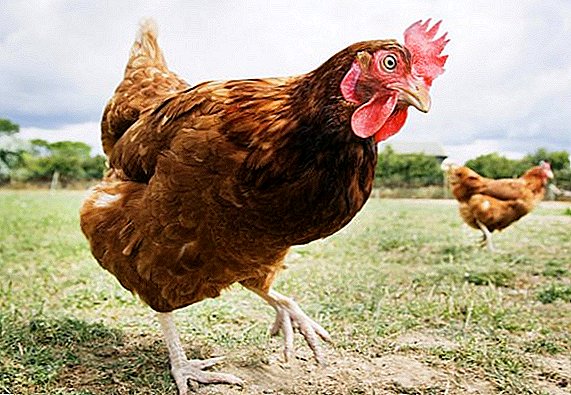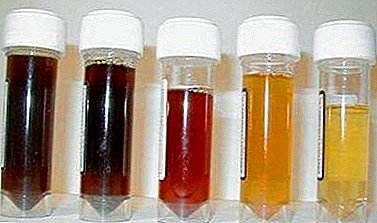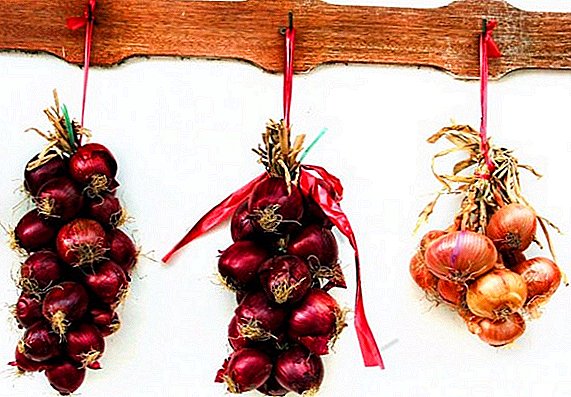 A fox that has climbed into a chicken coop will not cause as much damage as the rats who settled there. These rodents dirty on several fronts at once, differing in cunning, arrogance and gluttony. For many years, the war between man and rats has not yet seen the end. However, some fights of local importance, including in chicken coops, a person is still able to win.
A fox that has climbed into a chicken coop will not cause as much damage as the rats who settled there. These rodents dirty on several fronts at once, differing in cunning, arrogance and gluttony. For many years, the war between man and rats has not yet seen the end. However, some fights of local importance, including in chicken coops, a person is still able to win.
Under what conditions do rats appear
The coop, especially in winter, is a coveted rat retreat. 
This is explained very simply:
- room for chickens is literally stuffed with food in the form of different chicken feed. In addition, gray robbers are very keen on chicken eggs and even very young chickens;
- the comfortable microclimate created by the man in the hen house is ideal for the rat community. The better the poultry farmer is caring for the hen house, the more grateful to him are the rats;
- attracts gray robbers to the house and a peculiar smell that they associate with delicious eggs and chickens;
- It is much easier for rodents to enter the chicken coop by the presence of special manholes for chickens in it.
Did you know? Every sixth agricultural worker on the Earth works only to feed rats, each of which consumes a dozen kilograms of food each year.
Signs of rats
It is very easy to recognize whether a rat family settled in the house by:
- paths laid on the dusty floor, since rats usually walk the same proven route;
- the presence of rat droppings;
- teeth marks on wooden objects;
- the smell of ammonia, characteristic of the presence of rodents;
- shell fragments from eggs;
- the presence of gnawed passages in the walls at the basement.

Mechanical way
The most ancient method of human struggle with rodents became mechanical traps, the designs of which were developed by a great many. Applied to chicken coops, this method looks twofold. On the one hand, he assumes that all captured rats remain in place, and do not die in the depths of the hen house, where, decomposing, spoil the atmosphere and sanitary conditions of the house. However, on the other hand, the mechanical method of rodent extermination is fraught with the risk that birds may suffer from it. Therefore, the use of this option in poultry houses is limited.
Make a trap for rats, find out what rodenticides are and which rodent repeller is better.
Nevertheless, there are popular mechanical methods of catching rodents that do not pose a danger to chickens:
- For example, a glass container with walls greased with vegetable oil and with a bait set on the bottom. Climbing into the jar, the animal is not able to get back because of the fact that its paws slide along the walls of the vessel.
- You can catch a rat with a flower pot, to the bottom of which a bait is attached from the inside. The pot is turned upside down, one edge of it is lifted and a coin or something similar is inserted under it. A rodent that has climbed under the pot breaks its delicate balance, the coin falls - and the pot covers the rat. A prerequisite for this method is a metal or glass surface on which the pot is installed. Otherwise, the rat can gnaw at his own move in a wooden, for example, surface and escape.
- If you cut off the neck of a plastic two-or five-liter container, put the bait inside it and place it in a position of unstable equilibrium on the edge of the table, you can get an excellent trap. To prevent the capacity from falling prematurely, the inlet opening on the table should be secured with a light load or a thin strip of adhesive tape. And so that when falling, the container does not turn over on the floor, holes should be made at the edges of the inlet and the ends of the rope passed through them, which must be secured. Having climbed into the tank, the rat violates its balance, the tank falls, being held with a rope in an upright position, and the rat cannot get out in any way.
- In the lid of an old milk can, you need to make a hole about 10 cm. Then a hole is dug in the corner of the hen house, a container is placed in it and covered with earth so that only the hole is visible. In the hole throw the bait. Climbing into the can, the rodent is no longer able to get back.

Did you know? The number of hens living on our planet is three times the human population.
Biological method
Under the biological method means the fight against a rat tribe with animals. And this is not only the "classic" enemies of mice and rats - cats, but also dogs in the form:
- tax
- fox terriers;
- bull terriers
 Fox Terrier But there are among the cats, of course, and truly effective fighters against the rat invasion. Especially good are sphynx and Siberian cats. Very effective in cleaning the hen house from the rat invasion hedgehogs. Conducting the same nocturnal lifestyle, like these rodents, hedgehogs rather quickly deal with them. Some poultry farmers put geese and turkeys in the henhouse. These extremely sensitive birds at the slightest suspicious rustle raise the alarm. In addition, geese and turkeys can very well protect tender layers and chickens from rat attacks.
Fox Terrier But there are among the cats, of course, and truly effective fighters against the rat invasion. Especially good are sphynx and Siberian cats. Very effective in cleaning the hen house from the rat invasion hedgehogs. Conducting the same nocturnal lifestyle, like these rodents, hedgehogs rather quickly deal with them. Some poultry farmers put geese and turkeys in the henhouse. These extremely sensitive birds at the slightest suspicious rustle raise the alarm. In addition, geese and turkeys can very well protect tender layers and chickens from rat attacks.Read also about how to deal with rats in a private house and in the garden.
In general, the biological method of rodent control is close to nature, environmentally friendly and practically safe for chickens. However, it cannot be used together with chemical control agents in order to avoid poisoning of animals. In addition, this method is associated with additional difficulties associated with the care of animals.
Ultrasound method
The creative human mind came up with, among other things, ultrasonic repellents for rodents. These devices generate sounds of such frequencies that are not perceived by the human ear, do not act on chickens, but in rats cause anxiety, bordering on panic, forcing them to leave suspicious territory. A lot of similar devices, which have proven their efficiency, have been designed, as evidenced by the market. The most popular models of repeller consumers today are:
- "Grad A-500";
- "Typhoon";
- "Tornado-800".
 The difference between them lies in the power of the emitted ultrasound, the degree of its regulation, the presence of a timer that turns on the device unexpectedly for pests. Scarers constantly change the frequency of ultrasound, so that rodents do not get used to it. The devices are located, as a rule, at a height of one and a half meters from the floor and are oriented towards the center of the hen house or the detected rat holes.
The difference between them lies in the power of the emitted ultrasound, the degree of its regulation, the presence of a timer that turns on the device unexpectedly for pests. Scarers constantly change the frequency of ultrasound, so that rodents do not get used to it. The devices are located, as a rule, at a height of one and a half meters from the floor and are oriented towards the center of the hen house or the detected rat holes.
Important! Although ultrasound is absolutely safe for birds and is not perceived by the human ear, it is still impossible for a person to be in the zone of its action for a long time.
Chemical method
Most pest controlists believe that chemical poisons are most effective and easy to use: spread out, they say, toxic chemicals in secluded places, and expect a positive result. But the reality is not so simple.
Aeration
For example, aeration, which is carried out:
- chlorine;
- phosphorous hydrogen;
- carbon monoxide.

Poisonous substances
It is much easier to handle baits containing toxic substances. They smell attractive to animals, but after eating, they kill rats very quickly. The method, which really looks efficient and convenient to use, still harbors two important problems:
- most of the pesticides are dangerous for rats and for humans too;
- toxic chemicals luring rats may look attractive also to birds, dogs, cats and even occasionally for children.
Learn how to get rid of the water rat, mice and moles.
The most popular means of chemical extermination of rodents are now on sale in the form of:
- "Ratida-1"which is produced in the form of granules, of which there are 40 pieces in a pack, which is enough for processing not only the chicken coop, but also the whole house.
- "Ratida-2", containing, among other things, a substance mummifying the corpses of animals, as a result of which they do not decompose, do not spoil the air and do not violate its hygienic conditions.
- "Goliath", which is a very effective tool that shows its properties only after almost two weeks. During this period, rats continue to consume the agent, taking it for non-hazardous food. But then the animals begin to experience oxygen starvation, which causes them to leave the room and go out into the fresh air, where they are killed by death. This tool also mummifies the animal corpses.
- "Rat", which is a pesticide, which is packaged in ampoules. It acts quickly and efficiently. The contents of one of them are combined with half a kilogram of sunflower seeds and a tablespoon of vegetable oil. Eaten this bait rat dies for a couple of minutes.
 With all the seeming ease of use of pesticides, they belong to the least acceptable options for the fight against rodents.
With all the seeming ease of use of pesticides, they belong to the least acceptable options for the fight against rodents.Important! In addition to the immediate danger to birds and humans, they carry a real threat to cats that die after being caught and eaten by poisoned rodents.
Folk way
In the process of centuries-old rodent control, people not only realized that rats have a very developed sense of smell, but also found plant cultures that are irritating and repulsive to this delicate sense of smell. Some of them are harmful to the bird, so they are used with caution in poultry houses. These herbal remedies are presented:
- Guest from the tropics Chilibukha, whose seeds contain poisonous alkaloids. From these seeds, in a mixture with raisins and sugar, a bait is made, into which stearin chips are added and this means is laid out in the corners of the house, sprinkling boiled beans next to them. After a few days of the pests are only unpleasant memories.
- Extremely poisonous plant is autumn crocus. For the manufacture of 0.2 kilograms of bait you need only ten grams of autumn crocus. A finely chopped plant should be added to the croup or seeds and spread the mixture at the corners of the house.
- A thin rat smell does not tolerate a mint smell, as well as the aroma of bird cherry and broom. Infusion of them must be wetted with a cloth or napkin and put into a rat mink.
- Extremely deters rodents smell of black elderberry because of the hydrocyanic acid contained in it.
- The spines of the burdock clings very tightly to the wool of the animals, causing them great inconvenience, since the rats with great difficulty are freed from them. Therefore, rodents bypass any thistle tenth dear.

Also, the increased sensitivity of rodents to:
- a rag soaked in kerosene or turpentine;
- naphthalene mixed with sawdust;
- acetylene odor, which comes from calcium carbide mixed with water.
Build and build a chicken coop with your own hands.
Although the person is still very far from finally defeating the rats, of which there are two times more in the world than people, in local places with proper perseverance you can free both the house and the household farm from these harmful creatures.
Reviews:














